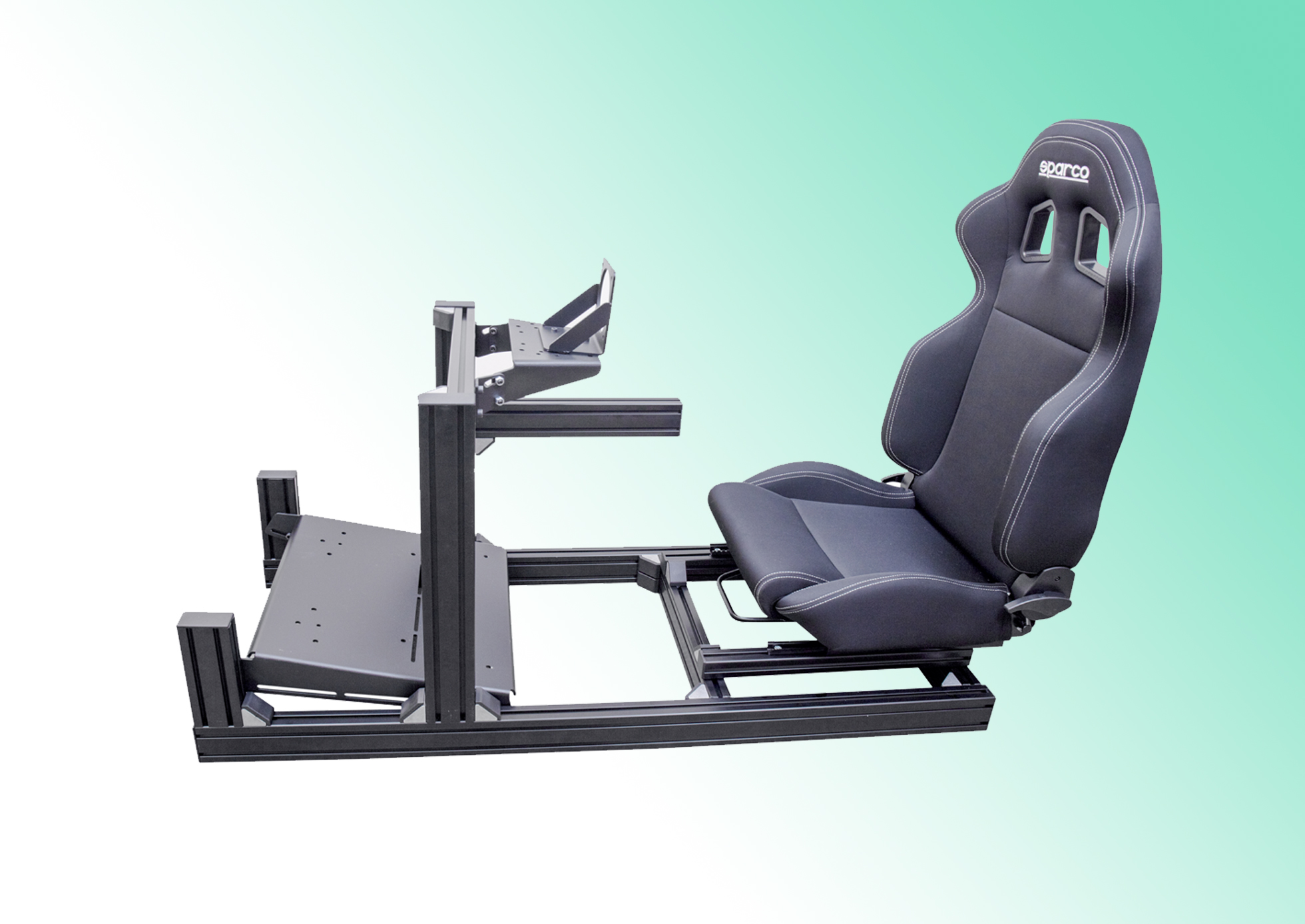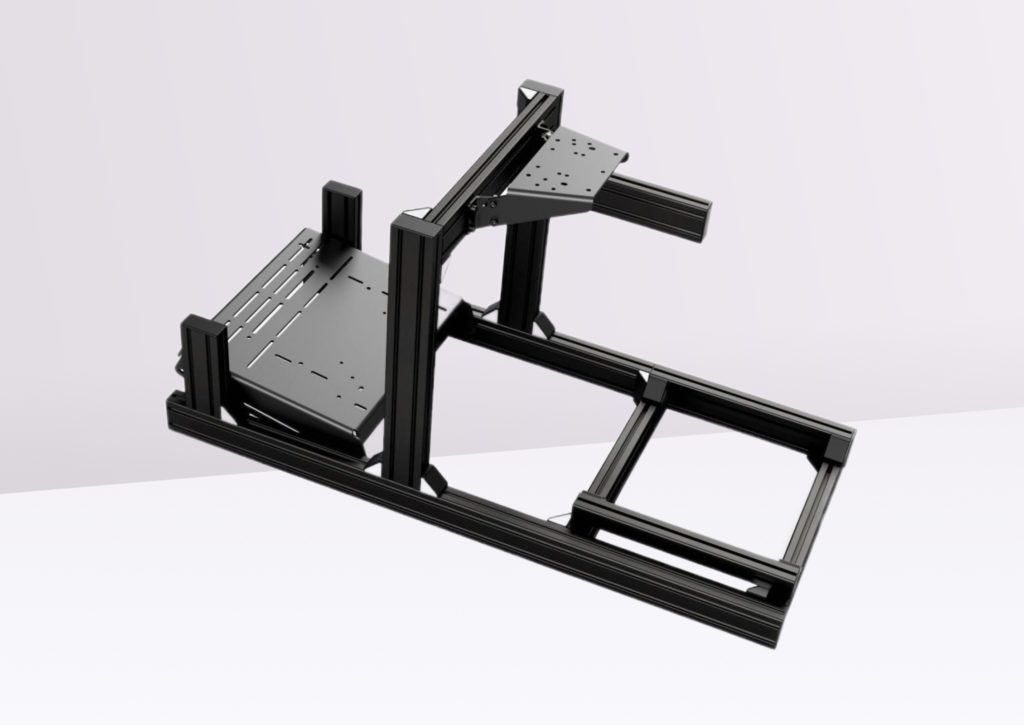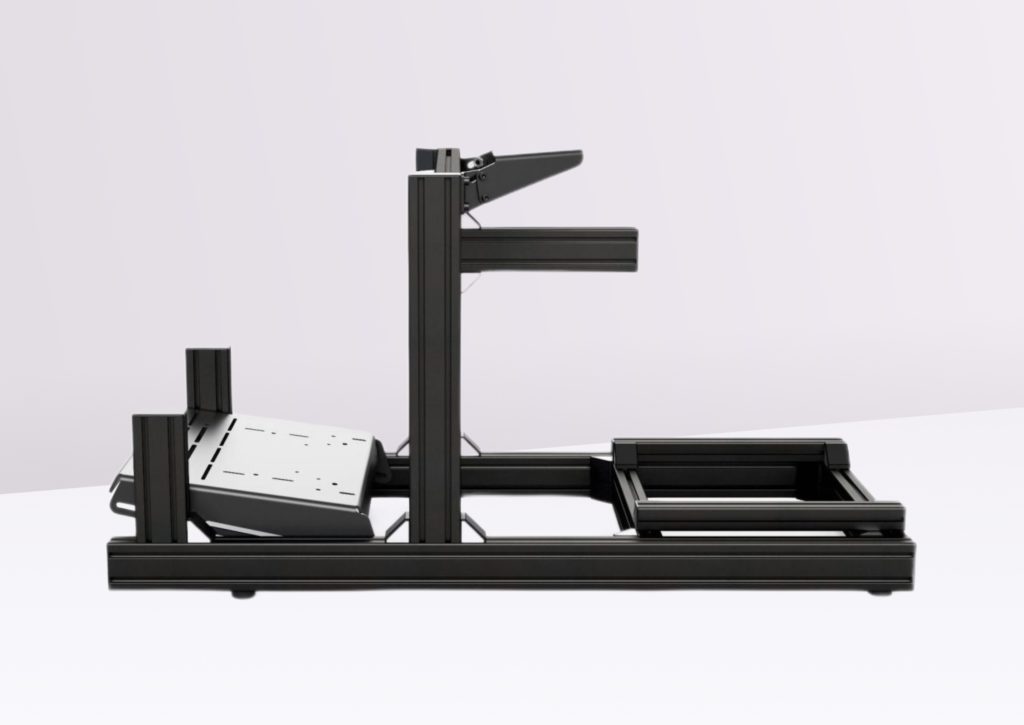The Sim-Lab GT1 Evo in a nutshell

Advantages & Disadvantages
✅ Good prices in some stores
✅ Well-built, sturdy chassis
✅ Well-thought-out bracket layout
❌ Difficult to assemble
❌ Seat not supplied with chassis
ㅤ
Sim-racing is no longer just about a steering wheel and pedals. These days, it’s all about immersion and realism. The aim is to really feel like you’re in a racing car, not to pretend you’re setting the fastest lap times.
To achieve this high level of immersion, we racers need a variety of peripherals. For example, a Direct Drive base is a must, as is an F1, rally or GT-style steering wheel. Also, the Load Cell must be present on the pedals, so that you can feel the force applied to the pedals. And let’s not forget the cockpits and hand-operated gear/brake levers, which add a further layer of realism. In fact, sim-racing has turned to realistic cockpits in recent years, with increasingly affordable options.
As you can imagine, not all chassis are the same, with some specially designed for racing disciplines. There are, for example, F1-type chassis, where the driving position is very low, just like in a single-seater. In what follows, I’m going to introduce you to the Sim-Lab GT1 Evowhich is actually a chassis to which elements can be added, making it extremely configurable. I’ll tell you about its strengths and weaknesses, and give you my opinion of it.
Main and technical cockpit features
- Frame dimensions: 1350 mm x 680 mm (L x W)
- Maximum rider height: 2 m
- Chassis weight: 55 kg
- Rigid structure in profiled aluminum
- Frame available in two colors
- Full adjustment of seat, steering wheel/base and crankset positions
- Slot for gearshift/handbrake bracket
- Compatible with the big names in sim-racing
GT1 Evo design
Although sim-racing chassis may look similar in absolute terms, some of them stand out from the crowd, as in the case of the Sim-Lab GT1 Evo. This “cockpit” isn’t actually a cockpit, but rather a tubular chassis onto which a racing seat is bolted. But let’s get back to the design of this product.
In absolute terms, it’s beautiful, with a very rigid, streamlined aluminum structure. You could say it’s square, and very well finished. Black dominates the chassis, with a few gray parts if you like that color. I think the Sim-Lab GT1 Evo will go perfectly with any sim-racing set-up, whatever discipline you like best. The only thing that can affect the design of the Sim-Lab GT1 Evo is your choice of seat. Personally, I’d opt for an all-black seat, or one with a few red accents.

Customized assembly
As you can probably imagine, the cockpits, or chassis, are delivered disassembled, so you’ll have to do all the assembly yourself. Some are easy to assemble, while others are not, as in the case of the Sim-Lab GT1 Evo.
For a start, there’s no manual in the box. As a result, you’ll need to have the digital version (PDF) to hand on your smartphone, tablet or computer, and that’s the first negative point. Secondly, the digital manual in question is not very clear, and it will take you several hours to assemble the Sim-Lab GT1 Evo. I’d advise you to be patient and follow the steps slowly.
The chassis is rather heavy, even without a seat. On the scales, the Sim-Lab GT1 Evo weighs in at around 55 kg, which is no featherweight. So, once assembled, I’m all for leaving it in one place and not touching it again. However, there are castors that can be fitted to the chassis to make it easier to move, but these are optional.
Manufacturing and finishing
The Sim-Lab GT1 Evo uses profiled aluminum for its structure. The finish is very good, as is the paint used. All parts are well cut out, and slots are pre-drilled to accommodate virtually all sim-racing peripherals available on the market.
Although assembly of the Sim-Lab GT1 Evo is tedious, this chassis is very well made, and solid to boot. I didn’t notice any flex at all on the various chassis mounts, whether steering wheel/base or bottom bracket, except on the shifter mount. It’s rock-solid, no matter how you use the cockpit. Hats off to the brand for that, and they’ve made up for it as far as I’m concerned on the difficult chassis assembly point.
Getting to grips with the cockpit
First of all: the Sim-Lab GT1 Evo does not come with a seat. All you get is the chassis, and that’s it. This choice was made in order to have a cockpit that is both customizable and highly configurable, something that can’t be said for most products available on the market.
Once you’ve got that in mind (the seat is not included), getting to grips with the Sim-Lab GT1 Evo is pretty straightforward. Admittedly, assembly is tedious and will take you a good afternoon at best, but adjusting the seat and brackets is easy enough. I had no major problems adapting it to my preferences, except perhaps for the paintwork.
In fact, even if it’s well made, it tends to lock up at the first false move. In fact, I’d strongly advise you to take great care when installing your peripherals, otherwise you risk getting scratches on every surface.
Sensations during play
In play, the Sim-Lab GT1 Evo is surprisingly stable, whatever the title you’re playing. Well, almost, except for one element: the gearshift lever mount. Since it’s anchored to the chassis via a single attachment point, there’s a slight flex, but it’s nothing serious.
Apart from this small problem, the Sim-Lab GT1 Evo is still an excellent chassis that will provide you with plenty of in-game feel. The seat platform gives you an excellent level of adjustability, which is ideal for adapting the seat to your driving style or the discipline you’re playing. F1 and GT fans will be delighted with this chassis.
As for the rest, the Sim-Lab GT1 Evo remains an excellent, very stable chassis, which gives you a feeling of security, especially where the steering wheel/base and crankset mounts are concerned. It doesn’t move at all, even if you’re using Direct Drive chainstays with high torque(Fanatec Podium DD, for example).

GT1 Evo chassis compatibility
In this respect, the Sim-Lab GT1 Evo is compatible with all peripherals from the big names in sim-racing: Fanatec, Logitech, Thrustmaster, Moza, Asetek, Heusinkveld and many more. It’s a real pleasure for sim-racing fans, in every respect.
As for the seats, it’s more or less the same, with brands like Sparco for example. However, the seat supports, the plate-shaped ones that attach to the sides, are not included with the Sim-Lab GT1 Evo, as these vary from seat to seat. I’d therefore advise you to do your homework on this point, so as not to fall on a bone.
Apart from that, the Sim-Lab GT1 Evo remains a very popular chassis, compatible with a wide range of sim-racing peripherals.
Value for money
The Sim-Lab GT1 Evo can be purchased for the princely sum of €449 on the manufacturer’s website, which is a pretty hefty price for a chassis alone.
Then, and this is where it really starts to hurt, you still have to pay for the seat and its mountings, plus other items such as castors, gearshift support, etc. Even taking this into account, the Sim-Lab GT1 Evo still offers good value for money, provided you shop carefully and track down special offers. Even so, the Sim-Lab GT1 Evo still offers good value for money, provided you shop carefully and keep an eye out for special offers.
My verdict on Sim Lab’s GT1 Evo
I’m a fan of configurable and adaptable cockpits, and the Sim-Lab GT1 Evo remains a good choice for sim-racers who want to treat themselves to a chassis. Admittedly, it does have its shortcomings, notably its difficulty during the assembly phase, but if you’ve got the patience and the money, the Sim-Lab GT1 Evo is well worth a look. But if that’s not your case and you’re not convinced, then then take a look at these other cockpits, which I’m sure will delight you.








0 Comments